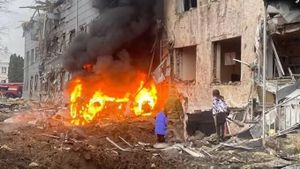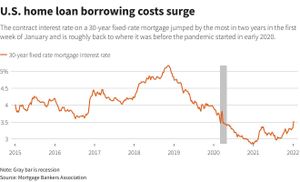At the Prayagraj Kumbh Mela, chaos erupted with the tragic stampede on January 29, claiming the lives of at least 30 people and leaving around 60 injured during one of India’s largest religious gatherings. This heart-wrenching incident has prompted widespread calls for inquiries as advocates urge accountability from local authorities.
Deputy Commissioner T. Venkatesh clarified on February 2, 2025, the unfortunate case of Nagasadhu Naganatha Maharaj from Chitradurga, whose body was discovered not at the Kumbh site but at Jhansi railway station, approximately 500 km away from the event. “This has raised questions among his followers and the public,” Venkatesh stated, adding, “We are coordinating with railway officials for radiological examinations. His remains are preserved at Jhansi hospital, awaiting procedures to transport them back to Chitradurga.” Authorities are investigating the circumstances surrounding Maharaj's death, which remains shrouded in mystery.
While the tragedy unfolded, the Kumbh Mela also saw significant activity as over 296.4 million pilgrims gathered at the sacred Sangam to bathe, emphasizing the scale of the event. On Saturday, February 1, 2025, about 5.42 million devotees took the holy dip, according to the Uttar Pradesh Information Department. The grim events raised urgent concerns about crowd control measures and administrative preparedness, particularly when the Kumbh is known for its massive turnout and significance.
On February 1, as foreign diplomats prepare to visit the Kumbh Mela, officials from 77 countries, led by Randhir Jaiswal from the Ministry of External Affairs, reaffirmed their commitment to proceed with their plans amid reports of the stampede. “Yes, diplomats will be visiting Kumbh tomorrow,” Jaiswal confirmed, downplaying safety concerns. Among those attending was Slovak Ambassador Robert Maxian, who praised the Indian government for organizing such significant events, saying, “I am very excited. India is like my second home.”
Uttar Pradesh Chief Minister Yogi Adityanath visited the hospital where victims of the stampede were being treated, expressing his condolences and concern. “I am here to enquire about the well-being of those injured,” he remarked during his visit. The Chief Minister also inspected the site where the stampede occurred, promising thorough investigations and accountability.
Following the tragedy, the Supreme Court has scheduled hearings for February 3 concerning public interest litigation seeking legal action against authorities for alleged negligence. The petition emphasizes “lapses, negligence, and failures” in crowd management, citing historical precedents of mismanagement during the Kumbh. Advocate Vishal Tiwari has called for systemic reforms, claiming, “These incidents point to the collective failures of administrations over the decades.”
“From the 1954 Kumbh Mela stampede accident to the recent 2025 tragedy, it is evident nothing has changed,” Tiwari argued, indicating persistent issues surrounding safety regulations at major religious events. The plea states each state must assume responsibility for ensuring safety, particularly when managing large gatherings of devotees.
On the ground, some attendees have also shared their experiences at the Kumbh. Nepal's Ambassador Shankar Sharma reported feeling “immense excitement” at the event and affirmed the necessity of commemorative rituals like the dip, which many believe brings blessings and redemption. “Attending the Mahakumbh for the first time was life-changing,” he said.
Meanwhile, several religious activities continue at the Kumbh. A Krishna-Arjun podcast organized by the Divya Jyoti Jagrati Sansthan provided teachings from the Gita aimed at guiding youth through personal challenges, showcasing the event's blend of spirituality and modernity. This duality highlights the Kumbh's long-standing tradition as both a religious gathering and cultural moment.
Against this backdrop of turmoil and faith, the stampede incident has sharply reminded everyone of the peril of overcrowding. With over 314.6 million devotees reported to have visited since the event's inception, the government faces immense pressure to improve safety protocols.
With the Kumbh Mela continuing through the holy days, officials are now tasked with enhancing crowd management and ensuring such tragedies do not repeat. Yogi Adityanath has promised reassurances to the public and diplomatic delegations. The tragic stampede rightly highlights the need for vigilance at large gatherings, blending ancient customs with necessary modern oversight.
The Kumbh Mela is more than just crowded rivers; it encapsulates the essence of millions connecting over shared beliefs and cultural identities, and above all, it is the hope of faith amid adversity. The impeding inquiry will reveal precisely how deeply the failures resonate within the organized structures of one of the world's largest religious festivals.



